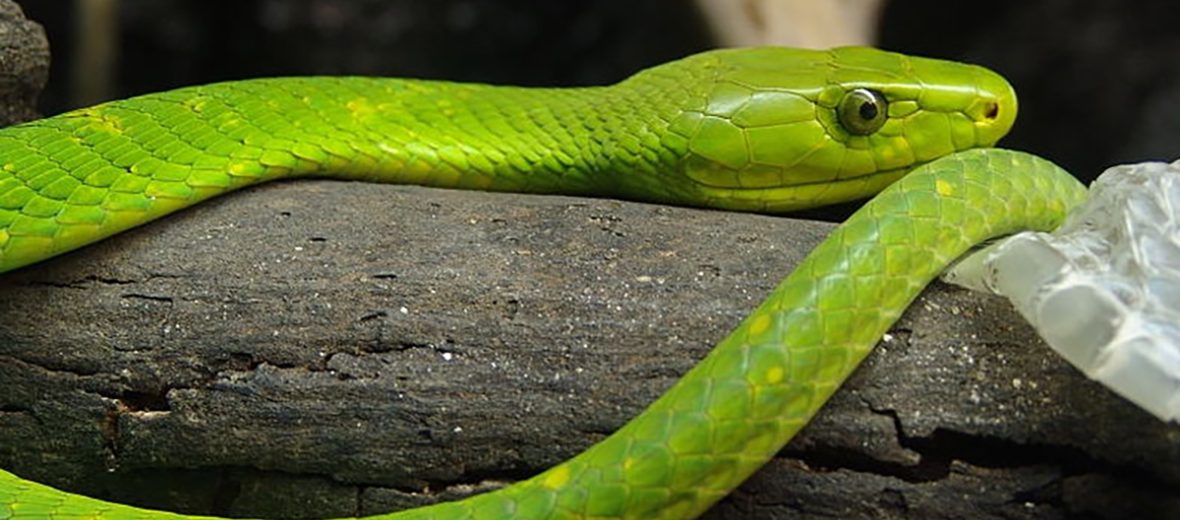
The eastern green mamba can be found along the coastal regions of Kenya; South Africa, Eastern Cape Province, KwaZulu-Natal; Malawi; Mozambique; Tanzania; and the United Republic of Zimbabwe. They prefer tropical rainforests, dune forests, montane forests, and coastal bush habitats. Eastern green mambas like well shaded vegetation within these habitats. These serpents are threatened by habitat destruction at the hands of housing, urban, and commercial development; road construction; hunting; trapping; and vehicle strike (being hit by vehicles). However, they are still listed as Least Concern by the IUCN.
First the Stats…
Scientific name: Dendroaspis angusticeps
Weight: Up to 3.31 lbs.
Length: Up to 8.2 feet
Lifespan: Up to 18 years
Now on to the Facts!
1.) Like other serpents, they are solitary. Only coming together to mate.
2.) Eastern green mambas are diurnal (active during the day).
3.) These mambas are highly arboreal (spend their lives in trees).
4.) They seldom venture onto the ground, unless pursuing prey or searching for a water source.
5.) Being predominantly sedentary, they can be found coiled up in a tree for days at a time.
But wait, there’s more on the eastern green mamba!
6.) The green mamba moves only about up to 18 – 20 feet per day. Talk about sedentary.
7.) Their top speed is around 11 mph.
Did you know…?
Bite effects include: pain and swelling of the bite site, which can lead to local necrosis (tissue death); dizziness; nausea; difficulty breathing and/or swallowing; irregular heartbeat; convulsions; and paralysis.
8.) The eastern green mamba has only a few natural predators. Mongooses, snake eagles and genets typically prey on them, while hornbills and other snakes prey on juveniles.
9.) Birds, eggs, rats, mice, bats, and lizards are all on the mamba’s menu.
10.) Eastern green mamba bites are not too common, as they are not always quick to bite, but are also rather reclusive.
But wait, there’s still more on the eastern green mamba!
11.) Bites occur in rapid succession to whomever corners or threatens them. That’s right. They don’t bite just once. They bite multiple times and rapidly. Each bite delivering venom.
12.) With the administering of antivenom, death is not likely to occur.
13.) A group of snakes is called a bed, den, knot, nest, or pit.
14.) Females lay up to 17 eggs that hatch in up to 12 weeks.
15.) Snakelets are born precocial (totally self sufficient) and fully venomous. They also measure up to 16 inches long.
Now a Short Eastern Green Mamba Video!
This video lists general green mamba facts.
Be sure to share & comment below! Also, check out the Critter Science YouTube channel. Videos added regularly!
Want to suggest a critter for me to write about? Let me know here.
Think you know a lot about critters? Try your hand at these fun, free quizzes:



